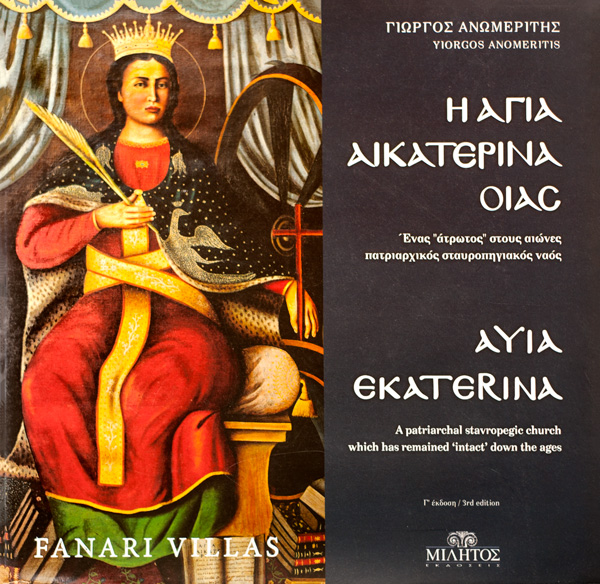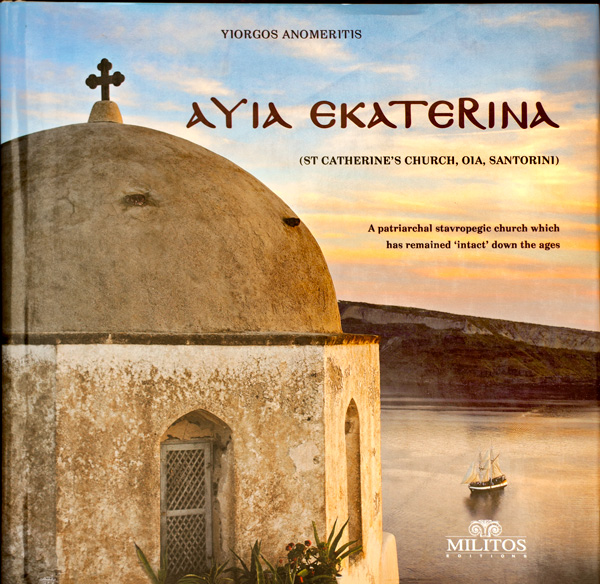


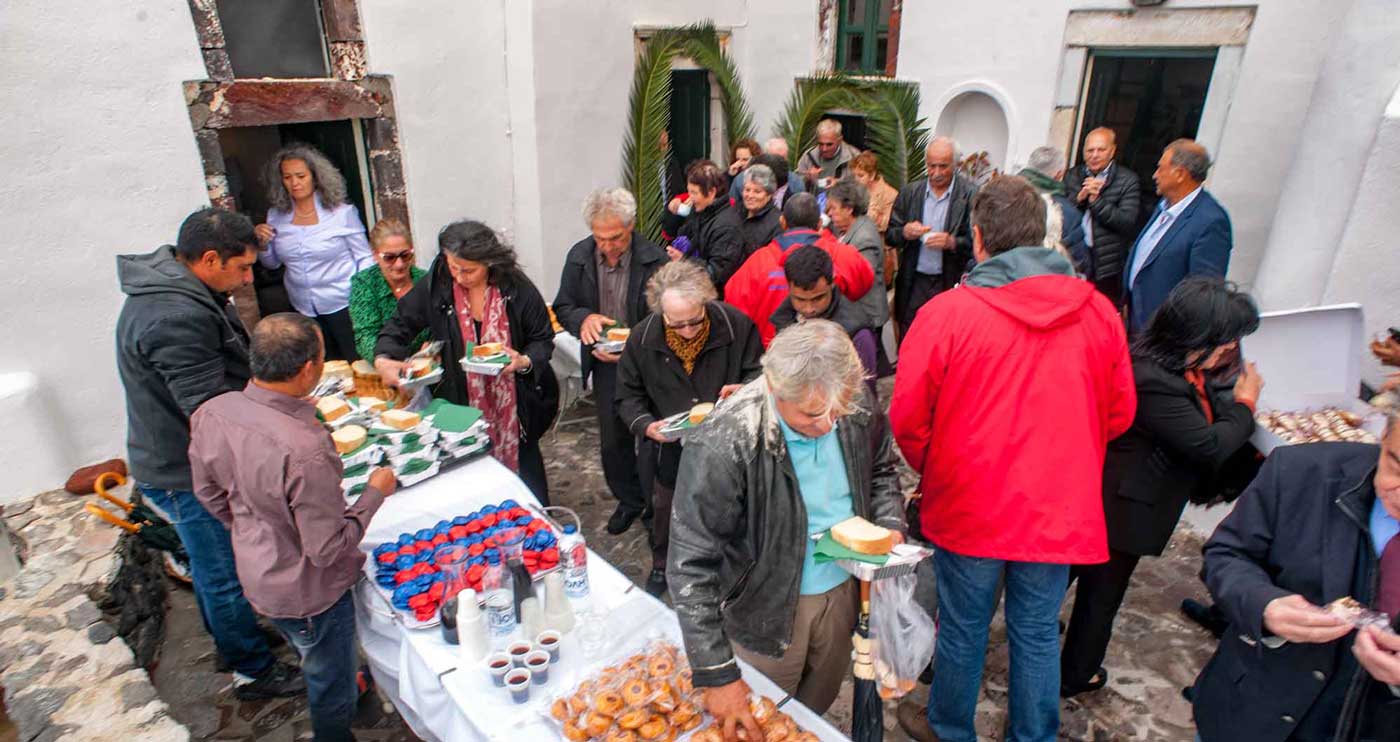
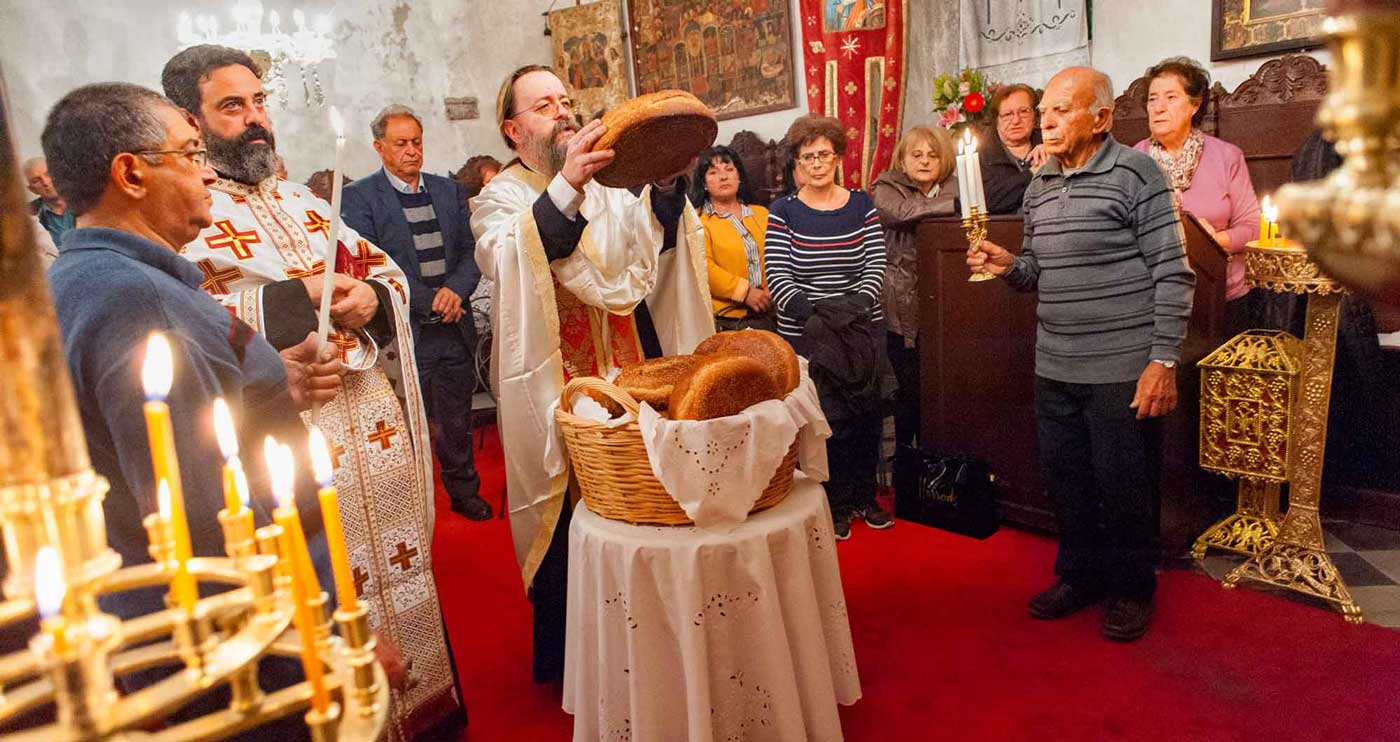
_DSC7811.jpg
_DSC7811.jpg
_DSC7811.jpg
_DSC7811.jpg
_DSC7811.jpg
The area’s name used to be “Garbinoi Myloi” which means “windmills on the northwest point” and they had been destroyed by the earthquake in 1956.
Ayia Ekaterina is currently, probably one of the oldest monuments in Oia and for sure the oldest church in North - North West Area of Santorini.
In the past it has been the Episcopal Church of the island and in accordance with patriarchal letters (sigills) it must have been built in the early 1600s. Sources note that it should have been a monastery with 18 monks, six nuns etc. It stands intact, undamaged since then, despite the nine earthquakes with a magnitude of over 6.0R that took place and shook Oia from 1650 onwards.
At Epanomeria = Oia, there was the largest Christian Orthodox community (96% of the local population) and the Greek bishop had his seat. Ayia Ekaterina was the only church of any size at Oia outside of Kastro (=castle), given that the other large church, St Nicholas, was within the Kastro and originally belonged to the catholic denomination.
According to one account, this church was built as the “orthodox response” of the Catholic monastery of St Catherine (of Siena) that existed at Skaros in 1595, given that Skaros was the Catholic kasteli (castle) and Epanomeria was an Orthodox center. Also to another assumption, the church was founded by one of the last D’Argentas family, when they were still lords of the Kastro, who married an Orthodox woman from a Byzantine family.
While strolling, exploring and just passing by besides the church’s walking path, you cannot imagine its interior size and its importance, as you can only see the upper part of its unique unpainted dome.
It is a cruciform church with an octagonal cupola of large dimensions resting on four square columns. The soil grounding and the technical support of the church were clearly carried out by professional engineers and local craftsmen that managed to form a fully static base and equally stable architectural super structure by using first class local materials.
The ancestors of Manolis Darzentas had gotten the permissions first to build and later on, to renovate the church directly from the siege of the Christian Orthodox Church, recognized by the Patriarchate of Constantinople in Fanari, as a “Stavropegial Temple.” As the family had to do with the ships and the sea, many objects of the church were bought and brought from cities of the Black Sea, from Constantinople, the Holy Land and Syros.
Inside the church, entering on the right, there is also a chapel in the name of St. Nicholas, the saint patron of seamen that was made of the remaining of a pre-existing church of the kastro and was destroyed by earthquake. It was instated adjacently there in 1764. Although an Orthodox church, it was founded and managed by two Venetian families, the D’Argentas and the Barbarigos, whose descendants were living permanently in Santorini and later on became Orthodox.
The church is provided with an elaborate wooden iconostasis decorated with 17 icons and a large cross (Deisis), works of iconographer Christodoulos Kalerghis from the island of Mykonos. It is the only church being provided with such a plurality of portable icons of this important Cycladic artist. These icons were painted in the period 1722-23.
Among the remaining icons, one distinguishes the large icon of Ayia Ekaterina, a work of 1880 by the naïve artist Emmanuel William Varvarigos, grandfather of today’s owner, who had studied painting in Paris and lived in Syros. This is the explanation of the western style on the portray of Ayia Ekaterina whose face resembles that of the painter’s unborn daughter, as ascertained from other of his paintings.
A lot of portable icons painted by Santorinian hagiographers of folk and also Byzantine art can be found in the church and the chapel. Pieces of excellent art are also the icons provided at the Dodekaorton at the top of the iconostasis, are following two of which bearing the encrypted phrase "too much bitterness for the Scientist" written by Christodoulos Kalerghis (1722), such phrase arousing the interest of those skilled in the art.
The church is itself a "museum" of post-Byzantine portable icons. The candle stands, the gospel books, the breviaries etc. are dated from the 15th to 19th century.
In the showroom of the church, one can admire the Patriarchal Sigill letter of 1764, issued by the Ecumenical Patriarch Samuel and bearing his signature and the signatures of 15 Bishops of the Synod of Constantinople.
Someone can also find texts of wills and of other documents of the time, whilst one may also admire paintings of Emmanuel William Varvarigos, functional items of the church, old and rare editions of Venice gospels, books of liturgies, vigil lights and objects from Odessa, tribute embroidery and holy crosses. Within the church we can further see ornate candelabra from Constantinople, chandeliers from Russia, one Holy Sepulcher composition from the Holy Land and portable icons of exceptional art bearing tributes.
One of the recent internal founding is the tomb of the ancestors of the church, with a marble label dated 1747.
Regardless the reason that is behind of the foundation of Ayia Ekaterina, there is one thing for sure, that the founders had devoted the whole of their lives in this church, so that their fellow-islanders should see, admire and celebrate its graces and find consolation in difficult times.
May be this is the reason that this church continues to stand here untouched throughout the centuries. Its name’s day celebration is on the 25th of November every year.
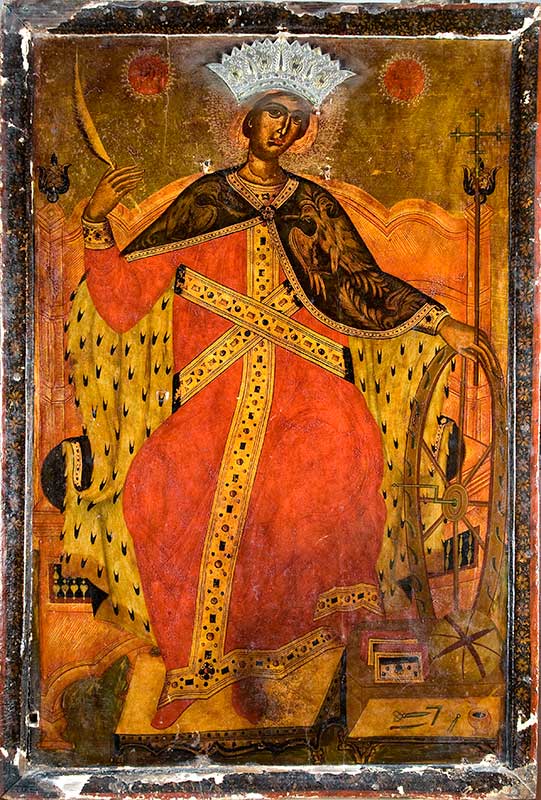











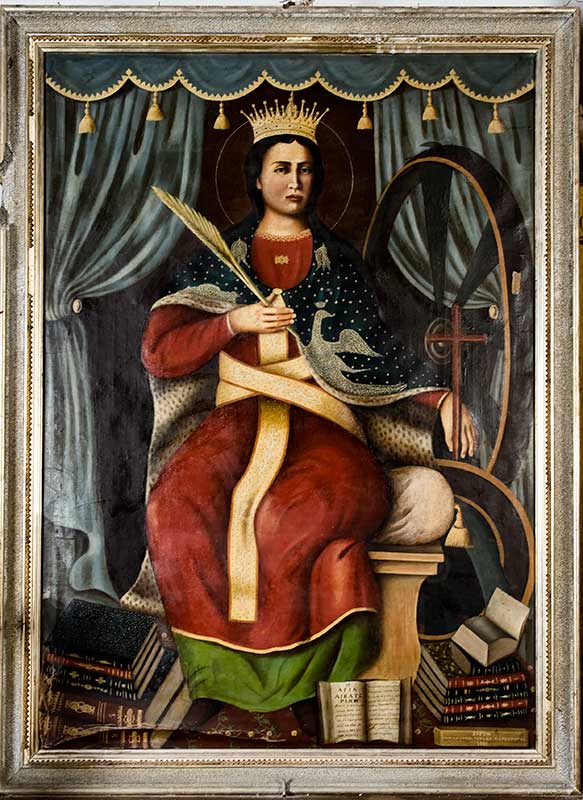


Yiorgos Anomeritis, is well known for his political activity: he was a Member of Parliament for 14 years and a minister in four different ministries (Economist, National Economy, Agriculture and Mercantile Marine).
He has been governor of banks, and has headed private and public enterprises and organizations. He is of Cycladic origin on both sides of his family. A freedom-fighter as a student against the military dictatorship (1967-1974), he was sentenced to 143 years’ imprisonment and spent four years in jail as a political prisoner.
A well-known economist, he is the author of scores of works of scholarship and literature, among which are six collections of poetry.
He has been honored by the state for his services, and has been awarded the İpekçi Peace and Friendship Prize, the Golden Phoenix of the Holy Sepulcher, as well as dozens of ecclesiastical, political, and social distinctions.
On the staff of the World Council of Churches for migration issues, he took part in 1968 in the dialogue between the Orthodox and Catholics of Greece on matters of joint worship. In 2015 the Holy Ecumenical Patriarch Bartholomew ordinated Yiorgos Anomeritis as “Archon Protekdikos” of the Ecumenical Patriarchate of Constantinople.
He has so many sensitivities and got occupied with the writing of poems and books with different themes (speaking of economy, democracy, sea, church etc.). He made an in-depth research for the church of Ayia Ekaterina and he managed to show its importance and legacy while at the same time discover an important but not well-known icon-painter Christodoulos Kalerghis, who had painted the icons of the church since 1722.
